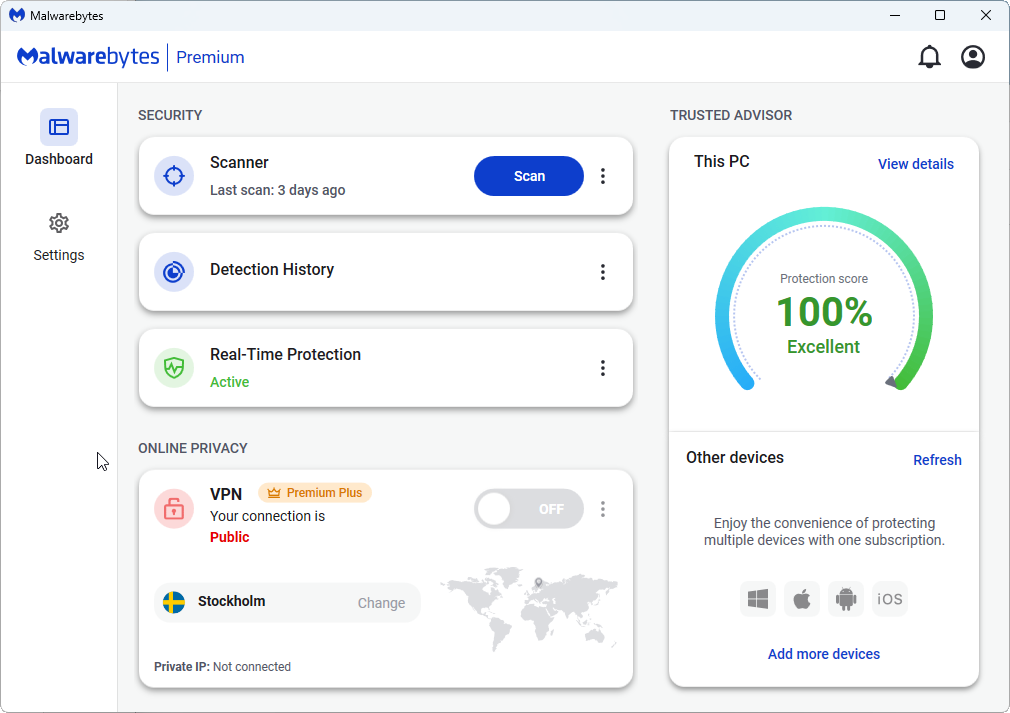

- #ANYTHING BETTER THAN MALWAREBYTES THAT IS FREE ANDROID#
- #ANYTHING BETTER THAN MALWAREBYTES THAT IS FREE PASSWORD#

Tap your network's SSID to see the SSIDs of other networks in the area. Under "Wi-Fi," you'll see your network's SSID.

#ANYTHING BETTER THAN MALWAREBYTES THAT IS FREE ANDROID#
Open the Settings app on your Android device. Here, you’ll see a checkmark next to your SSID. iOSįinding your SSID on iPhone or iPad is a straightforward task. Your network’s SSID will be distinguished with a blue WiFi icon while the other network names will be grey. Click the WiFi icon to see a list of networks in range and their SSIDs. Look on the upper right corner of your screen for the WiFi icon. You’ll also see the SSIDs of other networks in your area. Click the WiFi icon to see your network’s SSID. Windowsįind the WiFi icon on the bottom right of your screen. But it’s usually easier to check the network name through the operating system. If it’s not there, look on the side or the back of the device. Your SSID may be printed on the router near the cable ports. A threat actor with complete control over your hacked router could direct you to malicious websites or spy on your activity. Some hackers can also use your router’s default SSID to determine the make and model of your device in order to exploit any known vulnerabilities. Victims of such attacks unknowingly connect to a malicious access point in the neighbourhood and lose their personal data to a threat actor. For SecurityĬhanging your default SSID can stop you from falling victim to an Evil Twin attack where a hacker creates a fake access point with the same default SSID as popular routers. Hypothetically, there may be many SSIDs called “TP-Link” in the neighborhood, but there will only be one SSID called "TellmyWiFiIloveher." It's usually best to connect to your own WiFi network rather than any WiFi in the area for both performance and privacy. With so many default SSIDs being identical, changing your SSID can help avoid confusion. Why should I change my SSID? To avoid confusion For example, while many default SSIDs are called “Linksys” or “Netgear," others are mixtures of brand names and random numbers.

A default SSID can be as simple as the router's brand name to something a little more complex. Manufacturers usually create default SSIDs for routers. Some devices also prioritize the most preferred network or the network they most recently joined. But your device will not connect to two networks simultaneously. When two networks have the same SSID and security settings, your device will either connect to the one with the strongest signal or the one it sees first. What if multiple networks have identical SSIDs?
#ANYTHING BETTER THAN MALWAREBYTES THAT IS FREE PASSWORD#
But your device will need a password if the network is secured. Your device can connect to any SSID if the network has no security options enabled. What is SSID used for?Īccess points and wireless router networks broadcast their SSIDs to identify themselves. According to the 802.11 wireless local area networks (WLAN) standard, an SSID can be as long as 32 characters. It’s a unique ID that can be made up of case-sensitive letters, numbers, and special characters like dashes, periods, and spaces. When you tap and hold the WiFi icon on your device, you’ll see a number of network names or SSIDs in your area. Whether you're connecting to a WiFi network at home or the shopping mall, it has an SSID. The term SSID may sound complex, but it's just the technical term for a network's name.


 0 kommentar(er)
0 kommentar(er)
